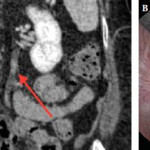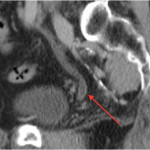Editorial: Sentinel nodes in prostate cancer– are we chasing a ghost?
Van der Poel et al. [1] report the findings of a consensus panel meeting on sentinel node (SN) biopsy at the time of radical prostatectomy. The consensus process was based on a two-round Delphi survey on the current evidence and knowledge gaps on SN detection. Then, a number of experts among those who answered the survey were invited to further discuss these issues during a consensus meeting.
The authors are to be complimented on their effort to establish standard definitions, techniques, and reporting of outcomes of SN detection. Their results push the field forward and will make it possible to compare future data between institutions, individual surgeons, and techniques of SN detection. Nevertheless, although the authors admittedly represented a group of potentially biased experts, current limitations of SN detection were fairly acknowledged.
One thorny issue remains, the definition of SN and whether a true SN exists or not. The SN concept implies that one should reliably find tumour in the first echelon of drainage when tumour is present. The SN concept further assumes that if the SN is free of tumour, then so are the next drainage stations. Does that really happen in prostate cancer? We know from previous mapping studies that primary lymphatic landing sites of the prostate are heterogeneously localised, that drainage varies from site to site of tracer injection (and thus tumour location), and that drainage varies from patient to patient [2, 3]. Thus, prostate cancer does not fit the Halstedian paradigm of a pre-defined, stepwise, uniform pathway of metastatic spread. An additional setback of SN detection is that lymph nodes that contain a large tumour burden often fail to take up the tracer [2, 4]. One might critically argue that this limitation may be dependent on the tracer used. The consensus group could not conclusively agree on which tracer technology to use. Looking forward, imaging probes that target tumour-specific molecules may improve tumour detection during pelvic lymph node dissection (PLND). The prostate-specific membrane antigen (PSMA) represents a particularly promising marker in prostate cancer imaging. However, using 68Ga-PSMA-positron emission tomography/CT for the detection of lymph node metastases before radical prostatectomy, one group failed to observe the expected improvement and reported only 33% sensitivity [5]. Future studies will determine whether these advances in prostate cancer detection will translate into more precise targeted dissection of lymph node metastases.
Altogether, the consensus group concluded that extended PLND should remain the standard of care, at least in patients with intermediate- and high-risk prostate cancer. This conclusion is laudable, but to be fair, we have no level 1 evidence for this either. However, every oncology-oriented surgeon would agree that each potential positive lymph node should be found and removed during surgery with curative intent. In case of true low-risk prostate cancer, this is probably less of an issue, but it should be mentioned that this population is at very low risk of dying from prostate cancer, even if left untreated, and the indication for radical prostatectomy should be questioned rather than that for PLND. Furthermore, pathological Gleason score is underestimated in preoperative biopsies in ~30% of all cases [6], making the decision to perform PLND or not in low-risk disease difficult.
Again, the authors should be complimented for their thorough work. We still do not know whether the SN exists, but performing surgery with image-guidance provides quality control for completeness of resection and might help detect (positive?) lymph nodes outside of the extended PLND template. Indeed, up to 35% of prostate lymphatic drainage sites may remain outside the extended anatomical template [3]. SN detection might also teach us when and where to stop dissection to decrease potential morbidity of PLND without leaving tumour behind. Thus, chasing the ghost of the SN has made and makes us better and more meticulous cancer surgeons. At the same time, it is humbling that we have been chasing a ghost for so long without bringing up level 1 evidence.
References
1 van der Poel HG, Wit EM, Acar C et al. Sentinel node biopsy for prostate cancer: report from a consensus panel meeting. BJU Int 2017; 120: 204–11



